Desert modernism is the garden design trend that blends minimalistic style with future-proof planting – 7 key elements to get the look
Simple, sustainable, and deeply restorative, this landscaping trend offers up a stylish way of living well outside


Desert modernism reminds us that the best landscaping ideas are often the simplest, offering a way to live in harmony with the natural ecosystem by creating a design that allows the built and natural worlds to converge.
The design ethos of desert modernism focuses on minimalism, straight lines, and plenty of open space. Buildings try to dissolve the boundary between interior and exterior spaces, often featuring large glass walls as a linking device. Emphasis is placed on the view to the landscape beyond, borrowing elements from it and attempting to emulate this within the boundaries of your own property.
Take xeriscaping ideas as your starting point, which you'll be more than familiar with if you live in the Southwest and are used to an arid or semi-arid climate where water resources may be limited. Then add complementary planting and hardscaping in the right materials to pull together the whole look.
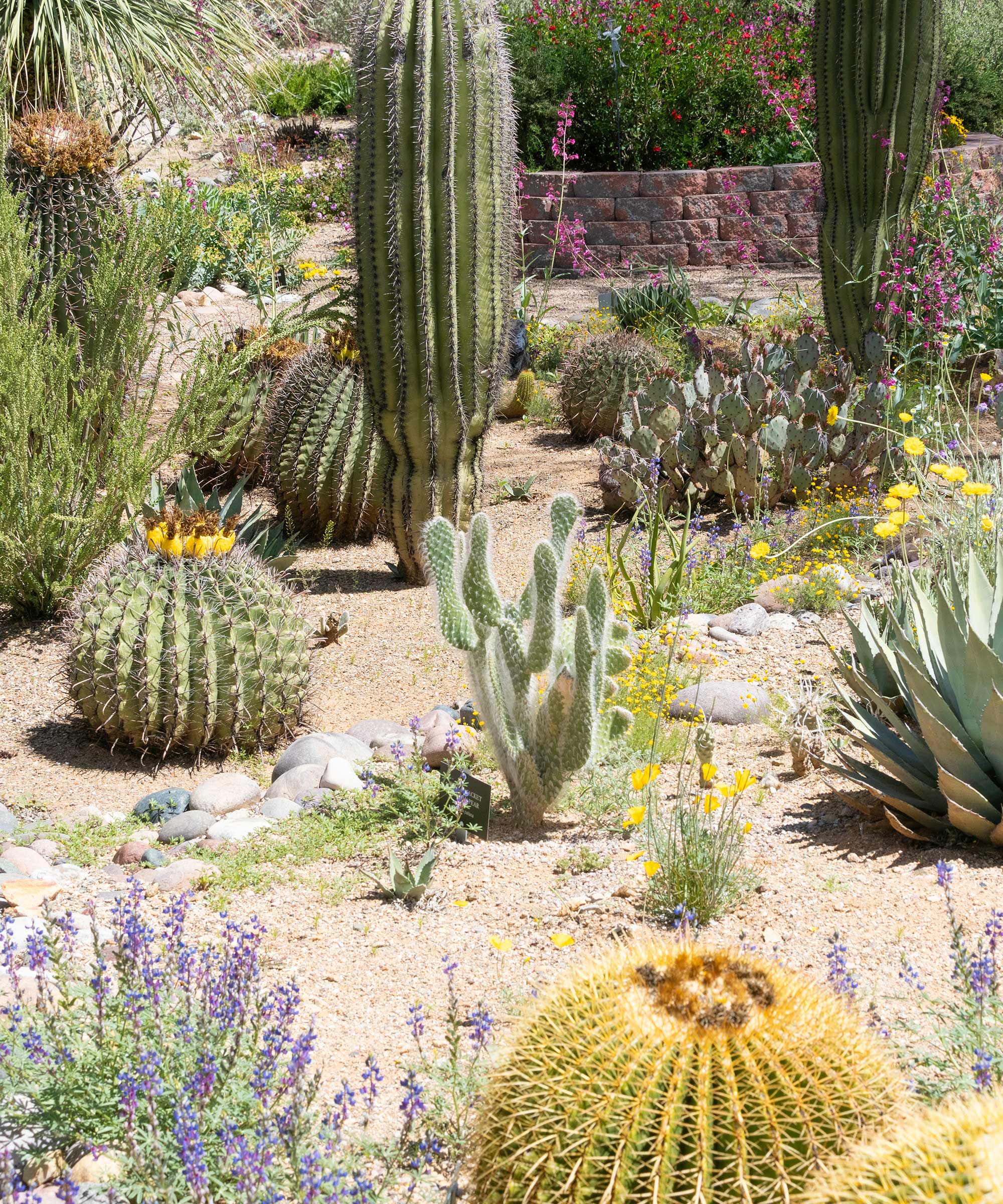
What is desert modernism?
We asked leading design experts for their take on desert modernism.
'We have been creating projects within this genre for quite a while and are always excited for opportunities to push the design envelope,' says SoCal based landscape designer Nate Fox. 'As climates change and water becomes more scarce and expensive, there are more of these projects. It’s just inevitable and ongoing.'
Desert modernism is about unity, blurring the boundary between built structures and open terrain by using native xeriscaping plants and minimalist forms that anchor the home within the surrounding desert.
'Classically associated with Palm Springs, there are variations on desert modern design that are more rough around the edges that have become tremendously popular,' says design director Kevin Lenhart, of landscape build and design experts Yardzen. 'The desert modernism aesthetic is popular from Joshua Tree to Tucson to Austin and beyond.'
Design expertise in your inbox – from inspiring decorating ideas and beautiful celebrity homes to practical gardening advice and shopping round-ups.
Today’s version of desert modernism feels warmer and more human than ever. 'It still honors the clean geometry of its mid-century roots but adds a biophilic layer, connecting people to nature and emotion, not just architecture,' says outdoor design expert Joe Raboine. 'Done well, it pairs sustainability and beauty. True luxury and quality design doesn’t always mean more; it actually often means less, done better.'
Now find out what experts say are the 7 key design elements you need to create the look.

Nate Fox is lead designer at Foxterra Design, a SoCal-based landscape architecture firm that has over 1 million IG followers and many celebrity clients. Many of their projects are based in California.

Kevin Lenhart is the Design Director at Yardzen and a licensed landscape architect. He holds a Master of Landscape Architecture degree from UC Berkeley’s College of Environmental Design. As a designer, Kevin’s practice is rooted in a commitment to improve physical, cultural, and ecological well-being.

With more than 30 years' experience in the industry, Joe Raboine Joe founded Harmony Outdoor Living in 2008. His innovations led to the company’s acquisition by Oldcastle APG in 2013. As Vice President of design, Joe develops strategies that enhance the design process.
1. Give plants space and intersperse them with stones

Desert modernism design typically features lots of straight lines and plenty of open space, as well as a materials palette of concrete, glass, gravel and stone.
Plants are typically broadly spaced in designs that lean into desert modernism style, and fittingly so, as the broad, expansive desert landscape it imitates is dotted but not blanketed with plants.
'Designed landscapes tend to look best when they take a similar tack, strategically placing moments of planting while allowing plenty of empty space between,' says Kevin Lenhart.
Desert landscaping ideas offer plenty of striking plant shapes and interesting textures to work with. Desert modern landscapes tend to foreground succulents like cactus and Agave, with complementary planting from tough, desert-loving shrubs, grasses and perennials, making them some of the best desert plants to work into your design.
'Stone also plays a key role, in large scale through decorative boulders, and fine scale through gravel, typically in a color palette of creamy whites, bleached tans, and warm, pale grays,' adds Kevin. Find a selection of colored landscaping gravel at Amazon.
2. Integrate sculptural elements to create dramatic silhouettes
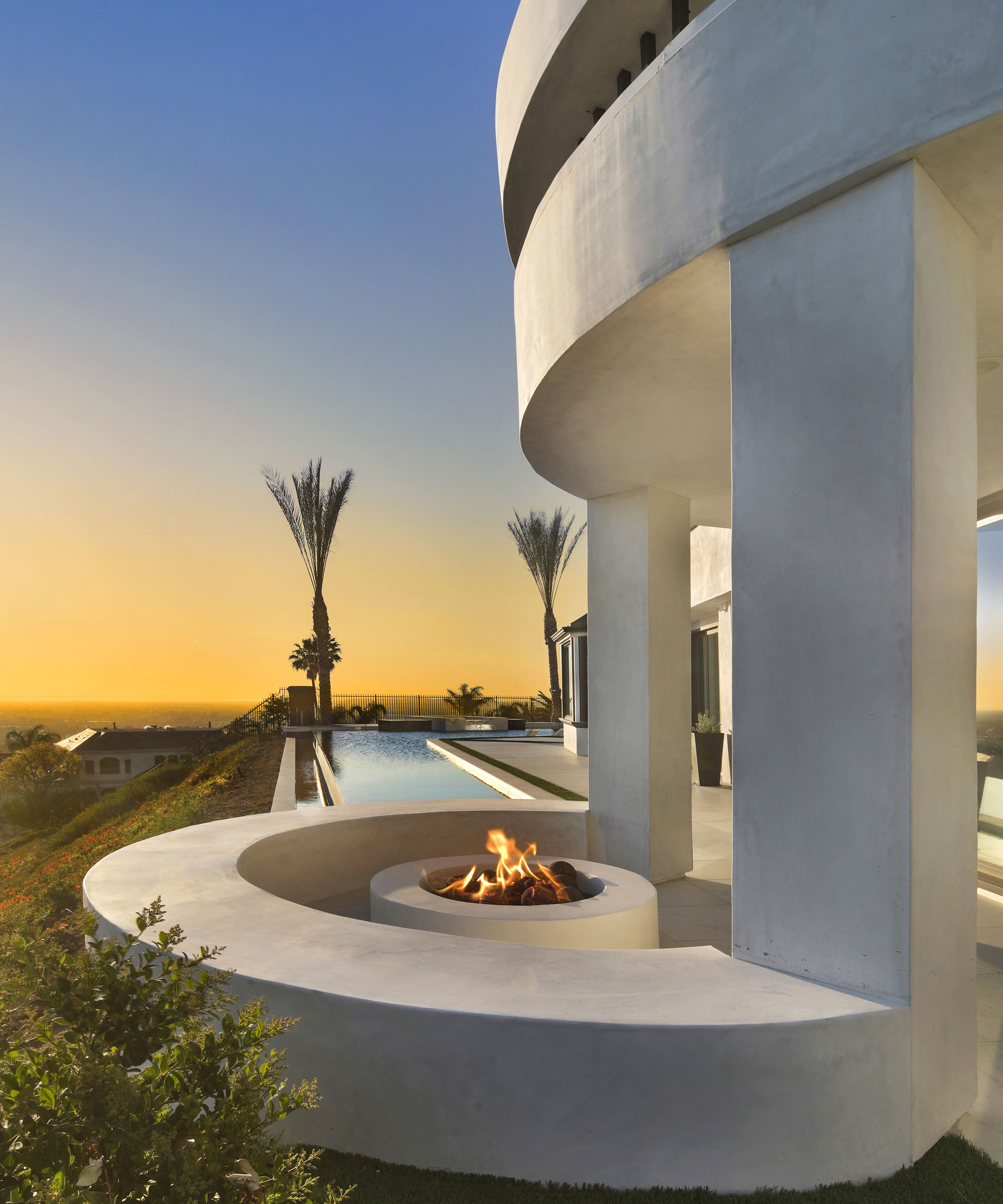
This striking infinity pool and fire table design in Anaheim Hills, CA, offers the perfect place to watch the sun set
Abstract sculptures are particularly suited to desert modernism style. 'Try positioning a sculpture at axis points, such as where pathways intersect, at the terminus of a sight line from interior spaces, or emerging from gravel planes like the plantings themselves,' suggests Nate Fox. 'Consider how shadows will move across and around the piece throughout the day.'
Remember that there's a natural connection between abstract sculpture and desert plants. Both rely on form, silhouette, and negative space rather than ornament.
'You could start by choosing two or three sculptural hero plants like golden barrel cacti or large agaves, then surround them with expanses of decomposed granite in contrasting colors,' says Nate. Find gold color decomposed granite for landscaping at Amazon.
'Think of your garden as a gallery where each plant is a carefully placed sculpture, not a collection you're trying to complete. The negative space between plantings is just as important as the plants themselves.'
3. Borrow from the surrounding landscape
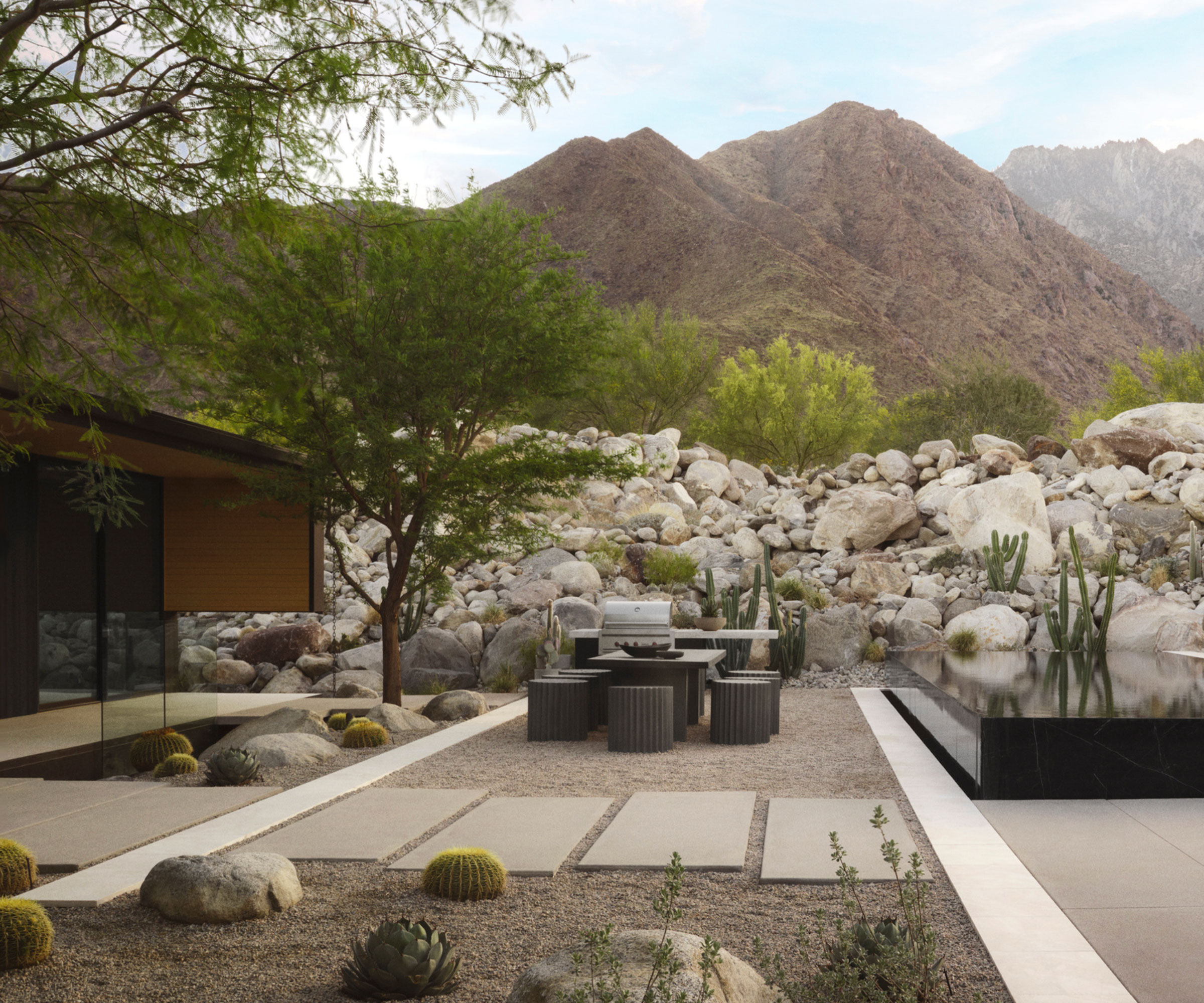
An informal Japanese stone garden is perched at the lowest point in front of this desert home, comprising large boulders that mimic the nearby mountains.
One of the key elements of desert modernism is to work out how your yard fits into the surrounding landscape. This design in Palm Springs by architects Hoerr Schaudt leans into desert modernism by embracing the property's boulder-strewn terrain and surrounding mountains.
California native and Hoerr Schaudt landscape architect John Hreno incorporated a hefty dose of regenerative design features here, including utilizing local materials and native plants like agave available from Amazon, yellow brittlebushes, Mexican palo verde, desert coral, and aloe vera. He carefully found and placed boulders and stones within the design too.
Hreno’s goal was to restore native ecosystems onsite with sensitivity and respect, making the impression that the new landscape had always been there.
'We emphasized organizational clarity and simplification of materiality, focusing on minimalism over maximalism, and leading with a regionally conscious approach to resources and natural systems,' explains John. 'This means we utilized sustainable and ecologically regenerative products and materials.'
John's design celebrates the desert’s inherent natural beauty, while consciously drawing attention to its dramatic seasonal nuances.

John Hreno worked as an architect across the globe before moving into landscape architecture with a focus on horticulture and ecology. Working in the realms of landscape architecture, urban design, and ecology, John prioritizes projects with the greatest positive social, emotional and ecological impacts. He has a Bachelor of Architecture degree from the University of South California.
4. Choose complementary landscaping materials
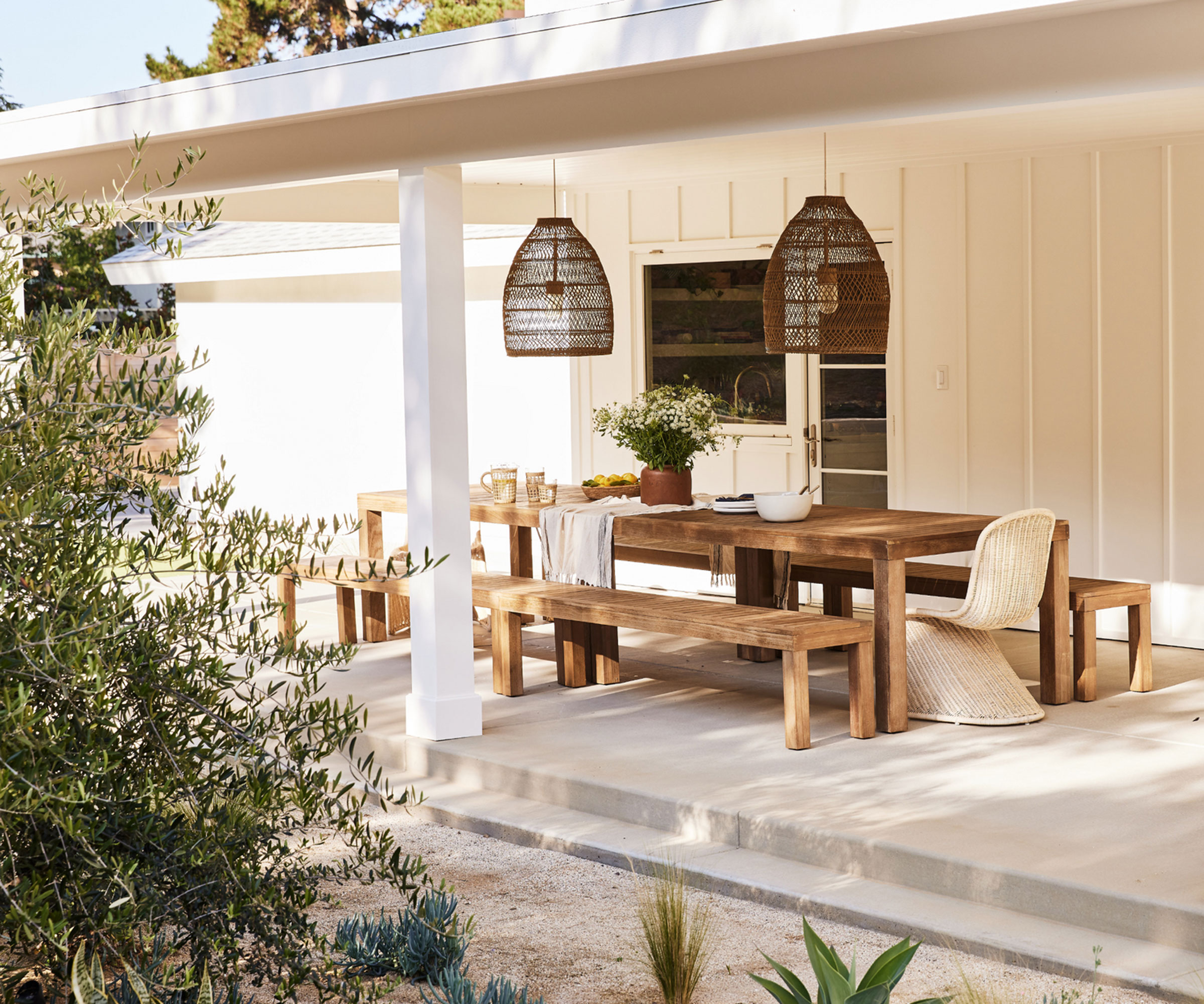
Choose an harmonious palette of colors and landscaping materials
In desert modernism style, texture and patina are given extra attention when choosing hardscaping materials.
'Rust-colored corten is a common feature, used for planters, edging, retaining walls, fire pits, or just about anything else,' explains Kevin Lenhart. 'Shipping containers and galvanized steel “cowboy pools” plug in perfectly to this aesthetic too ,' adds Kevin. 'They look especially striking when surrounded by elevated decking.'
In the Southwest particularly, you’ll also see dried Ocotillo (a plant that is indigenous to the area) used as a roofing material, bundled densely for complete shade or more loosely for dappled light. 'Whether paired with a modern steel frame or chunky repurposed timber frame, the texture of this material is delightful, and offers a big biophilic design payoff,' says Kevin.
Gravel and decomposed granite are also used as an outdoor ground cover material. Kevin explains that many designs don’t seem to feel as obligated to provide smooth paving as those classic Palm Springs designs.
5. Opt for earth-inspired colors and textures
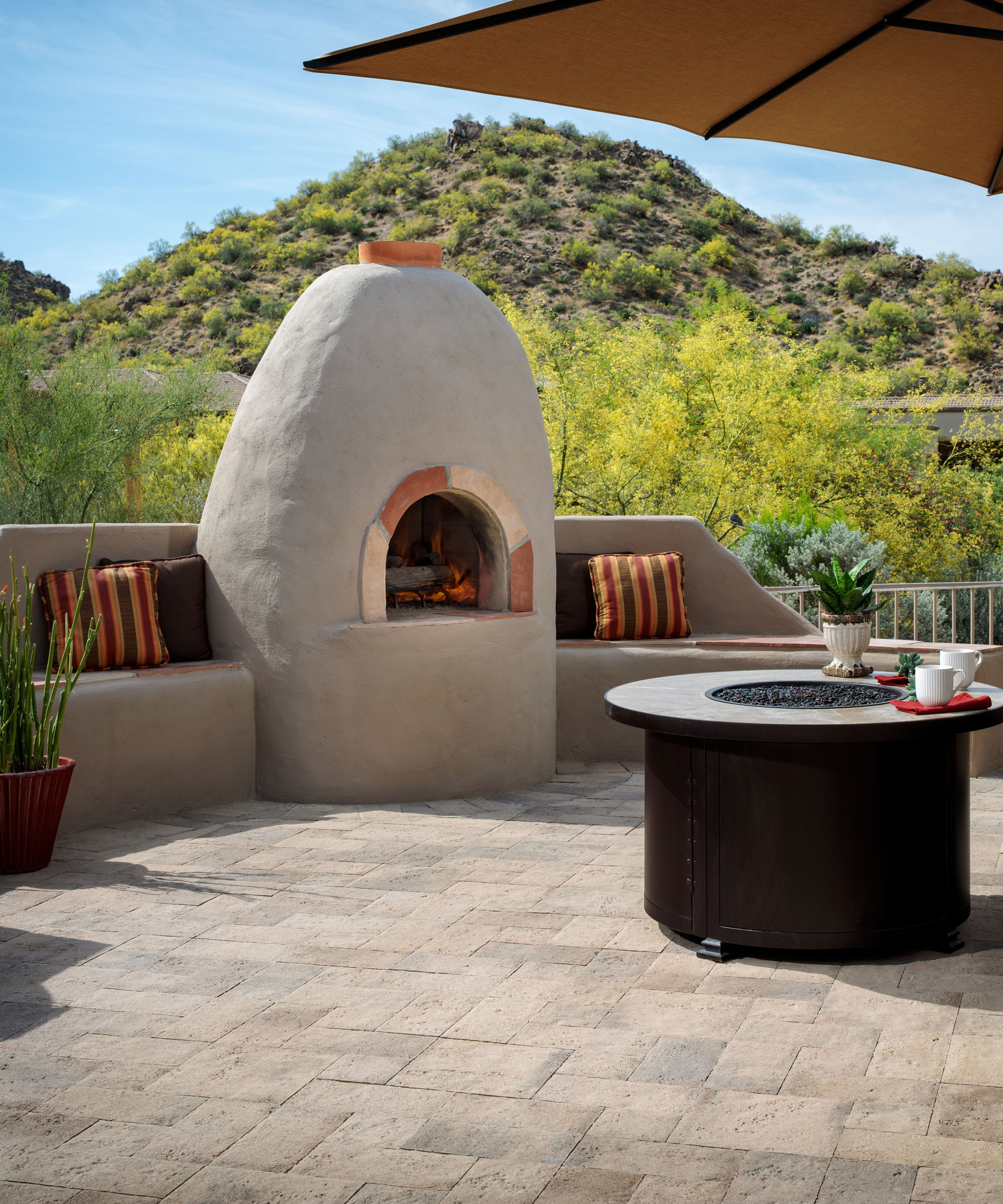
The rugged elegance and organic warmth of these natural paver stone textures is perfect for living in harmony with natural desert surroundings
Desert modernism is more than a design style. It’s an entire lifestyle that, done well, can seamlessly marry the built and natural world. It’s about doing more with less and finding beauty in simplicity.
'Like all great design, the palette starts with cues from nature: warm neutrals, silvery grays, sun-washed terra cotta, and deep charcoal tones,' says Joe Raboine. 'These subtle hues are a nod to the local landscape and extend that story.'
Texture matters as much as color. Matte concrete, smooth pavers, and naturally fractured stone surfaces strike a balance between precision and imperfection. 'We’re seeing a growing interest in these earth-inspired materials, colors, and modular formats,' adds Joe.
6. Enhance indoor-outdoor living

Adding a pool and hot tub was challenging because the rear half of the site sloped up more than ten feet toward the back. This meant it was necessary to excavate and incorporate terraces and retaining walls.
Whether you're going for a polished or raw look, desert modernism design is always true to a few key themes. Indoor-outdoor living is central. Outdoor areas feature plenty of spaces for entertaining and relaxing, as well as offering protection from the sun. To deal with the desert heat, back yard designs prioritize shade, and commonly feature some kind of pool.
For architect couple Annie-Laurie Grabiel and Arthur Furman the double courtyard was the main draw of this 1939 bungalow in Austin, Texas. Together with landscape architect Cameron Campbell they built the terraces and pool from reinforced concrete masonry blocks that were covered in chukum (Mexican plaster). Super durable, water resistant and natural, they were stained to match the limestone found on the property.
Meanwhile the wood on the pool deck is Cumaru, also known as Brazilian teak, which has excellent durability, as well as helping to define that indoor-outdoor vibe.
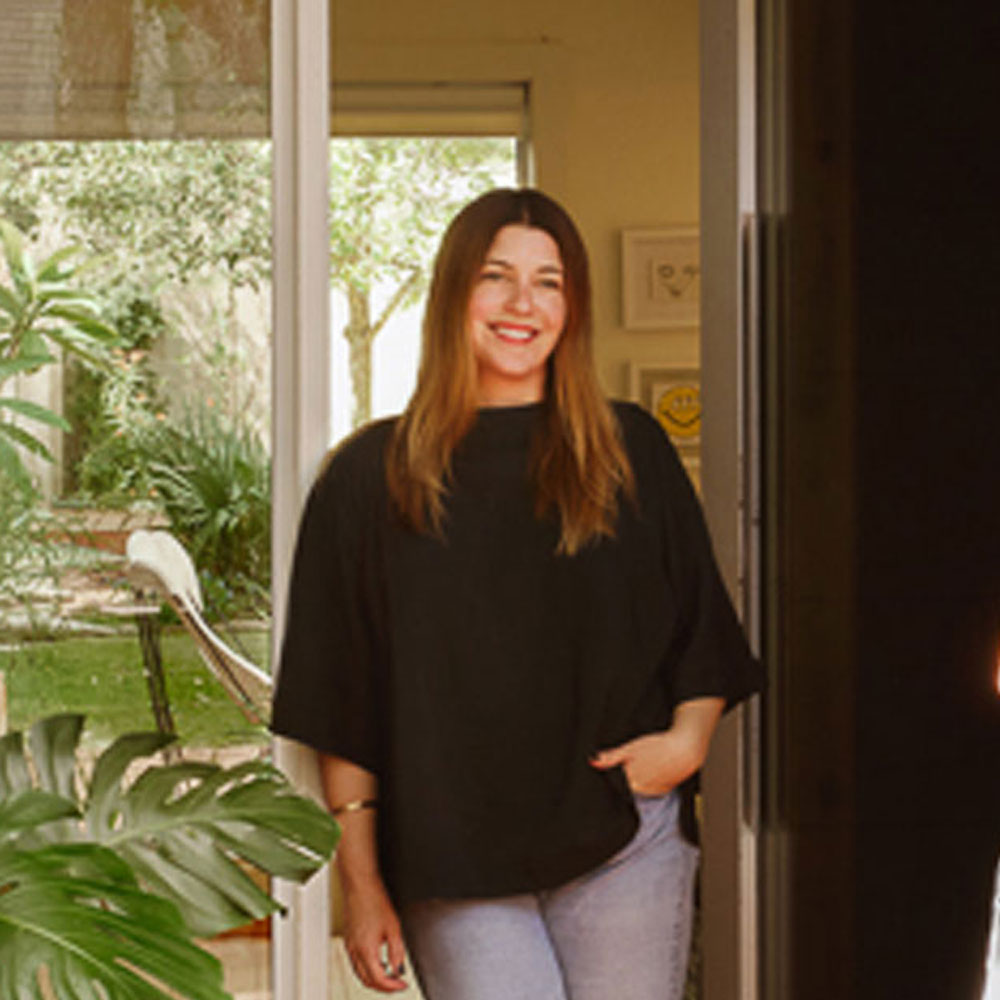
Founding principal at Side Angle Side Architecture, Annie-Laurie Grabiel offers a timeless approach and aesthetic, designing unique spaces that are custom suited to clients. She met Arthur Furman at Rhode Island School of Design. They began their careers in Miami, where they worked on a variety of projects. In 2010 they moved to Arthur’s home town Austin, where they began focusing on custom residential architecture.
7. Include a stylish water feature for maximum impact

This bold and modern small yard design in Irvine, California includes a stunning water feature
It's a common misconception that water features have to be eliminated from designs that lean heavily toward desert modernism but this is not the case. 'Closed-loop recirculating features can provide high sensory impact with minimal water consumption, typically losing only 1-2 inches per week to evaporation,' says Nate Fox. 'Let the water's reflection and movement create visual interest and a cooling contrast to the arid surroundings.'
Water, light and shadow can make a powerful impact in desert landscape design. 'Water in the desert should always feel intentional and reserved,' says Joe Raboine. It doesn't have to be overthought either.
'A single small reflecting pool or trough fountain can completely change the atmosphere and should enhance the local ecosystem, functioning as a vital source for local wildlife. These small water features can offer an incredibly calming presence.'
With such abundant intense sunlight, playing with shadow is equally powerful and becomes part of the design. A slatted pergola, a staggered wall, or a linear paver joint all create moving patterns as the sun shifts through the day.
'This is an element not often thought about in landscapes in general, but these natural fractal patterns can be incredibly calming to our subconscious minds,' adds Joe.
FAQs
How can a desert garden go beyond classic xeriscaping?
'With desert garden design, you can be incredibly expressive, playful and artistic due to the very nature of many of the plants and the often rugged or austere qualities of the ground plane,' explains John Hreno. 'Our design approach is informed by the greater surrounding landscape. The way people experience their property doesn’t end at the property line.'
In southern California, for example, there are magnificent mountainscapes that tower above desert communities. 'Utilizing these as borrowed landscapes that serve as backdrops is one approach we often incorporate into our desert modernism projects,' says John. 'The results are honest, simple and connected to nature.'
For more planting ideas that work in hot, arid climates try full sun ground cover plants and drought tolerant planting ideas to mimic what's growing in the bigger landscape around you.

Lifestyle journalist Sarah Wilson writes about garden design and landscaping trends for Homes & Gardens. She has studied introductory garden and landscape design, and also has an RHS Level 2 qualification in the Principles of Plant Growth and Development. She is a regular contributor to Homes & Gardens and Livingetc. She has also written for Country Living, Country Homes & Interiors, and Modern Gardens magazines
You must confirm your public display name before commenting
Please logout and then login again, you will then be prompted to enter your display name.